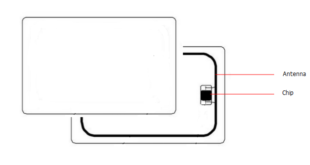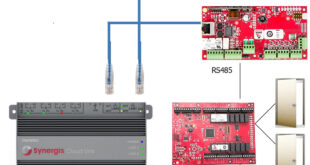Door security involves many door hardware. Some are very familiar and others can confuse us when it comes to installing and running them. Therefore, someone this could be overwhelming. Because of the different products, terminology and requirements of the territory where he is.
In this article, I am going to walk you through what kind of hardware goes on doors and how it secures it.
The hardware likely to be installed on a door are locking hardware (mechanic or electronic), hinges, door closer, door operator, panic hardware, 3/15 module (delayed egress).
Mechanical locks
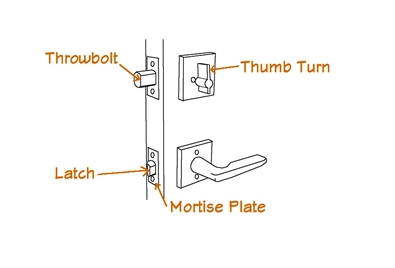
Source of the image : www.directdoorhardware.com
1 – Handle (Lever)
No need to define it. Everybody knows a handle. However, it would be relevant to remind you that they work in different ways. As a result, here is a classification:
- Passage set
Installed when there is no need to lock. Both sides are free all time.
- Storeroom lock
The outside lever locked all time. Need to have a key to retract the latch bolt and have access. Meanwhile, it is always free to exit.
- Entrance set
Locked by a key from the outside and with a thumb turn from the inside.
- Interconnected lock
It locks the door from both sides. So, no matter if you go in or out, you need a key.
- Mortise
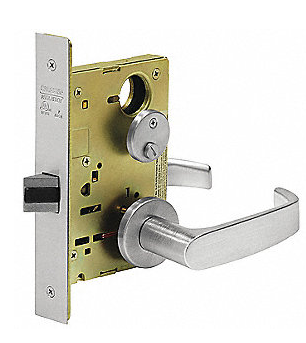
Mortise locks are pieces that we introduce into the door. That is why they need a pocket to be cut in the door to fit. They are heavier and stronger than the cylindrical locks.
2 – Deadbolt
It is the same as the entrance set. It is a lock with a key from the outside and with a thumb turn from the inside. As a result, there is no need for a key to open from the inside.
Electronic locks
Security systems rely on those locks. They are controlled by a system through a reader and the database; Electrical locks are devices that keep the door locked, and open it only for authorized people.
What kind of electrical locks?
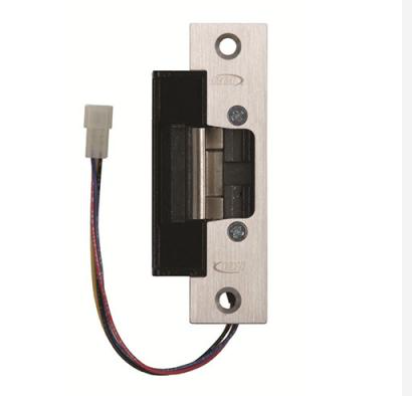
- Electrical strike
They are door-locking devices, used in conjunction with various lockets and access control systems to provide security and automatic door opening.
Electrical strike use a solenoid to control a movable keeper. Upon activation, the keeper allows the door to open even if the latch bolt is not in the extended position.
- Electric mortise
Electric Mortise Locks are mortise locks with a solenoid that keeps the latch bolt from retracting (usually only from the unsecure side). As a result, it is only possible to turn a handle from the secure side to retract the latch bolt, then opens the door. But impossible to turn it on the outside of the door, unless the solenoid is disengaged. Thus, anyone inside can get out simply by turning the handle. Outsiders must use a key or must have access granted by the access control system.
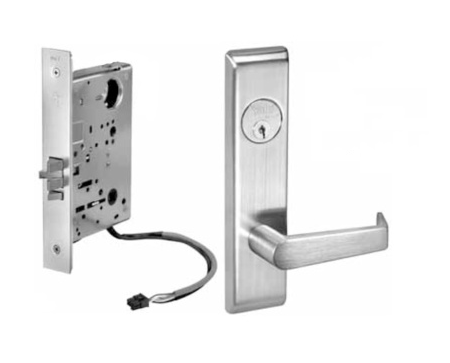
- Electromagnetic lock
It is an electromagnet attached to the top of the door frame and a metal plate mounted onto the door opposite the magnet. When the electromagnet is energized, the door is held closed with a force that varies from 500 to 1500 pounds.
Panic hardware
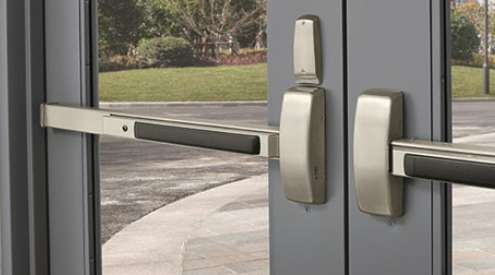
Also called panic bars or push bars. This hardware allows the door to be locked from the outside and free for exit from the inside. It is also very adapted for fire and dangerous evacuation because it is very easy to open a door.
3/15 module (delayed egress)
this device allows a safe delayed exit where people and goods must remain inside the premises. When attempting to exit, the device sounds an alarm and keeps the door locked for 15 seconds.
The 3/15 module, by sounding an alarm as someone tries to exit, prevents the exit. But if there is an emergency and a person pushes the panic door for 3 seconds, a door will open within 15 seconds.
Door operator
They are mainly used where assistance in opening is needed. For example, to assist people with reduced mobility or in hospital entrances or corridors.
In order to function properly, the operator needs an electric pulse. An actuator or a button triggers the pulse. Of course, anyone in need to open a door automatically, pushes the button.
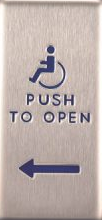
Door closer
Obviously, a door closer should close the door. So no need to close it manually. But The function of a door closer is not just to close the door. It also controls the door in both the opening and closing cycles. And it prevents damage and injury caused by abuse, wind, or other factors.
There are many types of door closer :
- Surface mounted door closer
The surface mounted closers are the most widely used. These closers mount on the surface of the door or frame on either side of the door.
- Floor door closer
These closers mount in the floor, and the door is typically hung on pivots. They are ideal for very heavy doors to provide excellent support.
- Electronic door closer
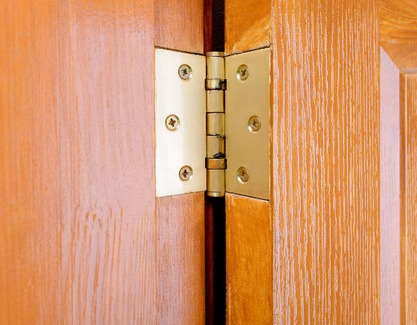
Hinge
Its function is to hang the door.
There are many types of hinges :
- Five-knuckle or three-knuckle hinges,
- Continuous hinges : It runs the entire length of the door. Often used on exterior doors
- Wide throw hinges : They are commonly used when a door needs to open 180 degrees. And extra clearance is needed behind a door.
- Circuit electric hinge : There is wire passing through it to energize and monitor a mortise
Electric Power Transfer (EPT)
It is similar to the circuit electric hinge. However, it doesn’t hang the door. It transfers the wire from the door frame into the hardware installed on the door.
Read our posts:
